Once upon a time, in a land far away, there lived a kind grain seller. A very good man named Nánaksá, who was a fakír (like a wise teacher), often visited him to chat.
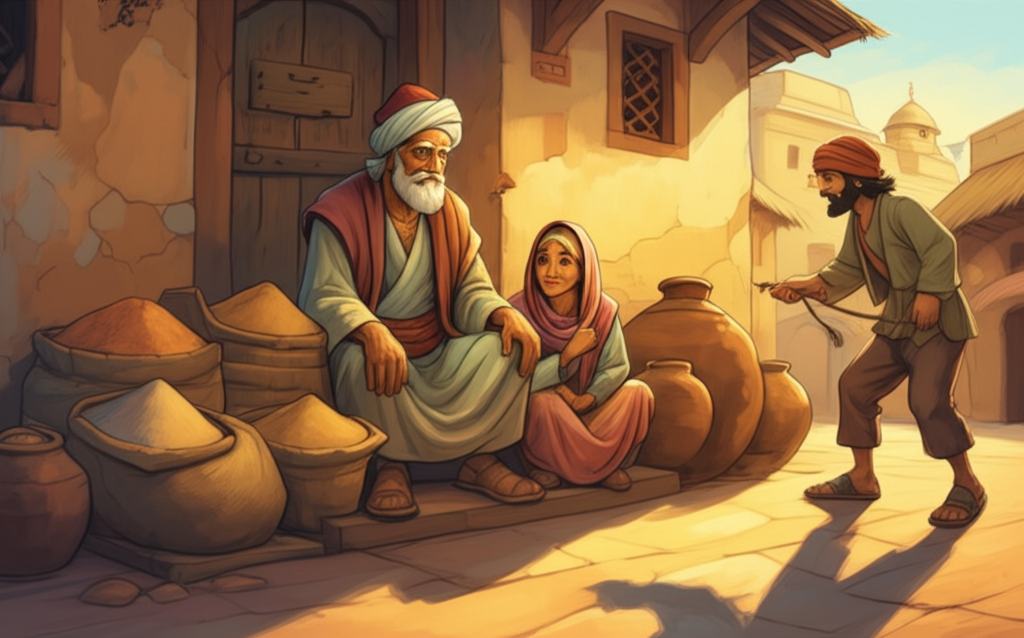
One sunny day, Nánaksá came by as usual. The grain seller and his wife were happy to see him. While they were sitting together, they saw a goat being led away to be killed. The poor goat wiggled free from the person holding it and hid behind the grain seller! But it was caught again and taken away.
The grain seller didn’t say anything, but Nánaksá laughed.
Later, they saw an old woman who had done something wrong. The king had told the guards to take her to the jungle and leave her there to die! The old woman escaped and ran behind the grain seller for help. But she was grabbed and dragged away.
The grain seller still didn’t say anything. Nánaksá laughed again, and the grain seller’s wife noticed.
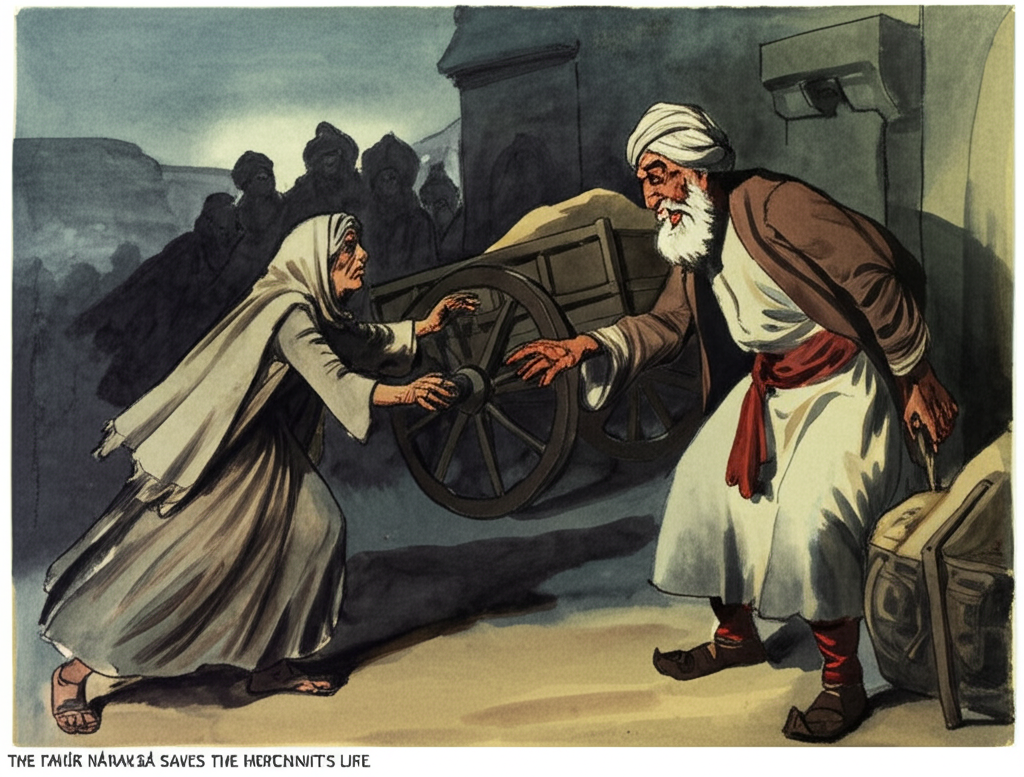
Just then, the grain seller’s little daughter woke up and started crying loudly! Her mom picked her up and tried to comfort her, but the child was fussy and kept pulling at her clothes.
Nánaksá laughed a third time!
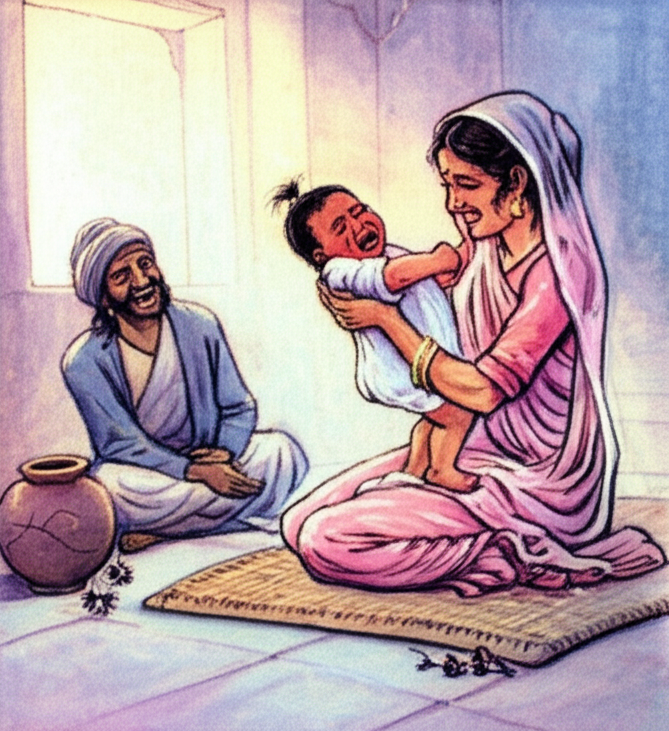
The mother fixed her dress, held her daughter close, and calmed her down. Then, she grabbed a knife and went up to Nánaksá. She said, “Why did you laugh three times? Tell me the truth! What’s so funny?”
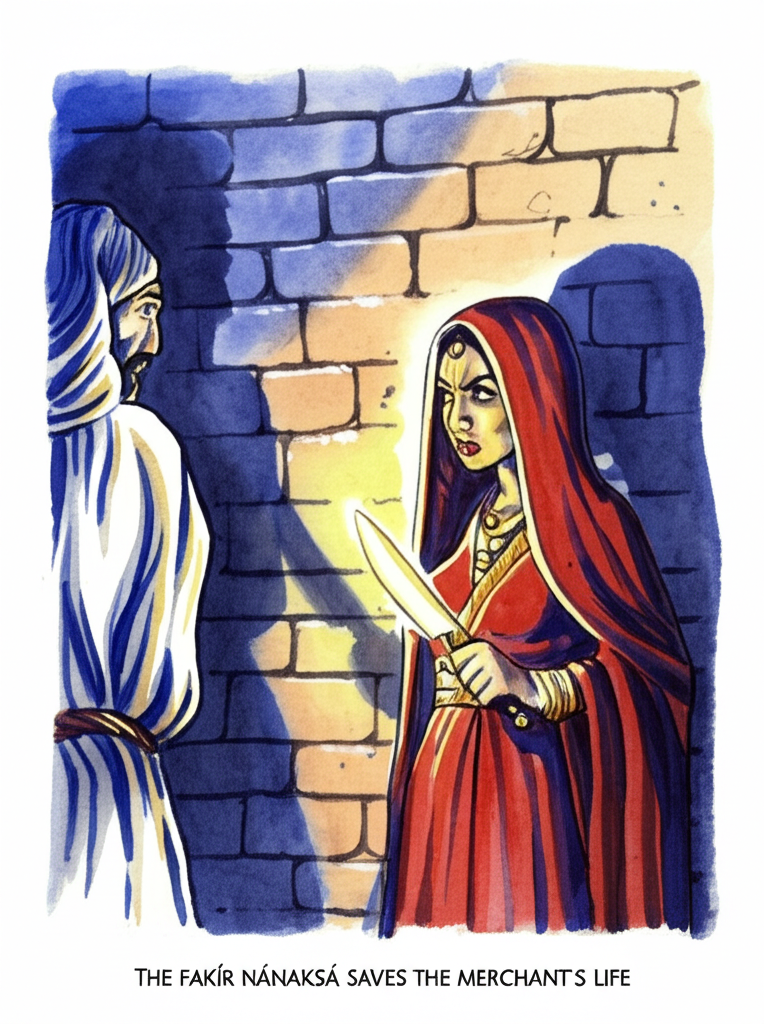
Nánaksá replied, “Does it matter if I laugh or cry? Don’t ask me questions! I’m just a fakír. It doesn’t matter at all if I laugh or cry.”
But the grain seller’s wife really wanted to know why he was laughing. She said, “If you don’t tell me, I’ll use this knife on you!”
“Okay,” said Nánaksá, “If you really want to know, I’ll tell you.”
“I really do!” she said.
“Well,” said Nánaksá, “Remember the goat that hid behind your husband? That goat used to be your husband’s father! Your husband could have saved him if he had given the man leading him away just a little bit of money. The man would have been happy and left the goat alone.”
“Okay,” said the woman. “Why did you laugh the second time?”
“Well,” said Nánaksá, “That old woman who hid behind your husband was his grandmother in her past life. If your husband had given the guards some money, they would have let her go! He could have saved her. If anyone, even an animal, asks us for help, we should try to save them!”
“Alright,” said the grain seller’s wife, “You’ve told me why you laughed the first two times. Now, tell me why you laughed the third time!”
“Listen,” said Nánaksá. “Remember your husband’s sister, the one you weren’t always kind to? She passed away, but then God made her your daughter! That way, she can bother you and maybe get you back for not being nice to her when she was your sister-in-law.”
“Is that really true?” the woman asked.
“Yes, it’s true,” answered the fakír, “That’s why I laughed the third time. But now, would you like to hear something else? If you promise not to cry, I’ll tell you.”
“I promise not to cry, so tell me!” she said.
“Then listen,” said Nánaksá. “God has decided that your husband will pass away tomorrow morning at ten o’clock. He will send four angels to take him away.”
At this, the poor woman started to cry.
“Don’t cry!” said the fakír. “I’ll tell you what to do. Tomorrow morning at four o’clock, you need to get up and clean your house really well. Then, buy new plates and make the yummiest, most delicious treats you can!”
“I’ll do it,” she answered.
Before the sun came up, she got out of bed and did everything the fakír had told her. Then, she went to him and said, “The treats are ready!”
“Now,” said Nánaksá, “Go get a nice, clean cloth. Take it and the treats with you, and walk until you find a big, open field far away from here. You’ll see a pond and a tree. Put your cloth down by the pond and tree, and put all the treats on it. At nine o’clock, you’ll see four men come to bathe in the pond. When they’re done, they’ll come towards you. You need to say to them, ‘You must be the four angels! Please have some of my treats!’”
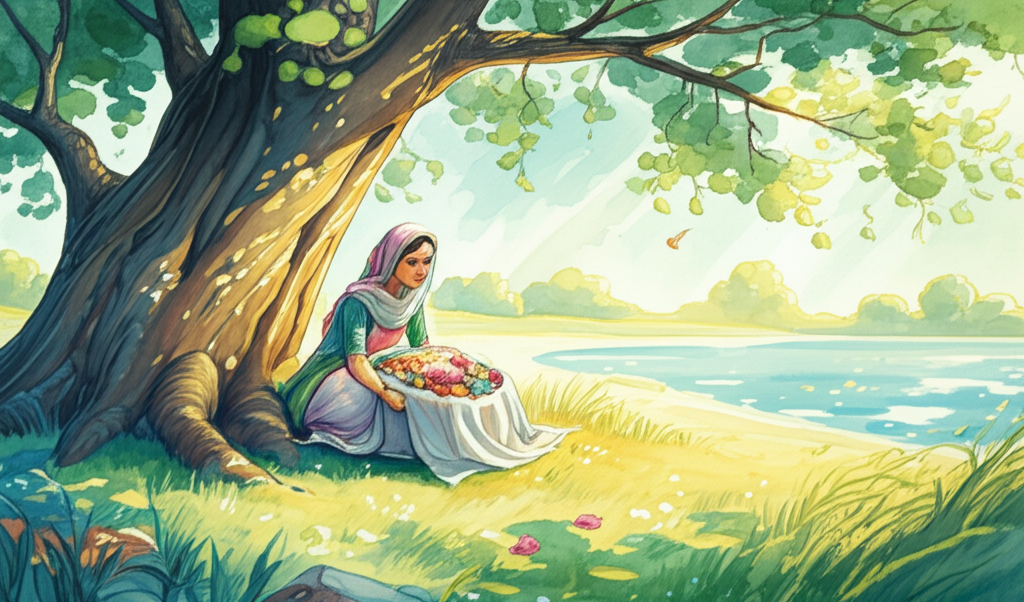
The woman went to the field and did everything Nánaksá had told her. Everything happened just as he said it would. When the four men had bathed, they walked over to the woman, and she said, “You must be the four angels! Please have some of my treats!”
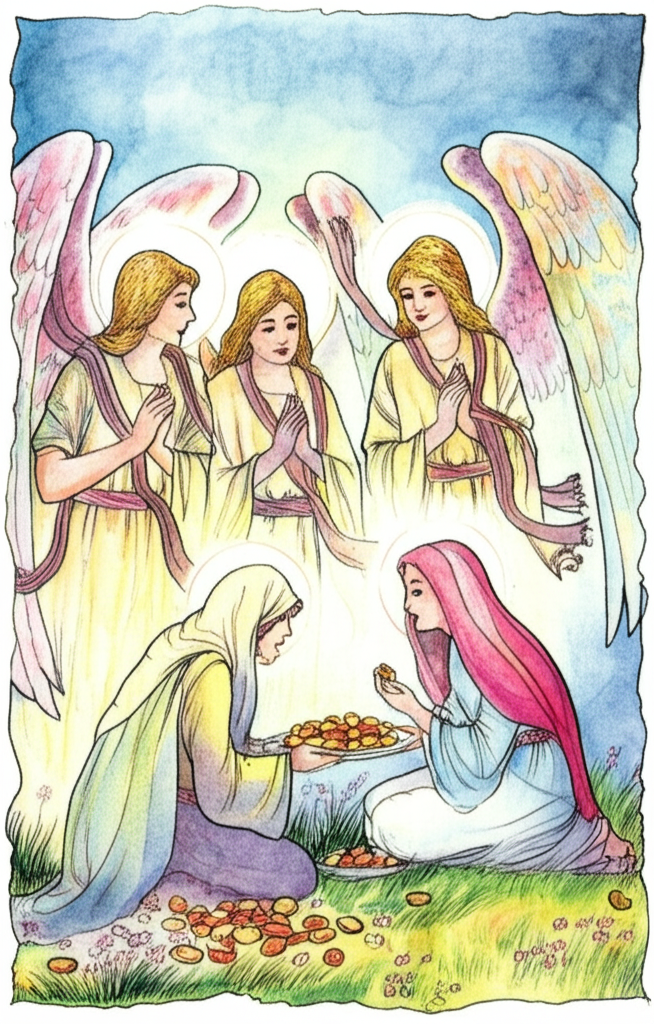
The leader of the angels, named Jabrá’íl, and the other three angels answered, “We don’t have any money to buy your treats. How can we eat them?”
“Don’t worry about the money!” said the woman. “You can pay me another day. Come on, eat some!”
So the four angels sat down and ate lots and lots of her treats!
When they were finished, they stood up and said to each other, “Now we need to go to the village and get the grain seller.”
Then, the woman bowed to them many times and said, “That grain seller is my husband! But, if you need to take him, then go ahead.”
The angels felt sad. They said to her, “How can we take your husband’s life now that we’ve eaten your food? But stay here under this tree until we come back, and then we’ll pay you for the treats.”
So the angels left, and the wife waited under the tree. She felt very sad. After a while, she thought, “I’m going home! Maybe those angels have already taken his life!” Then she cried and stayed under the tree.
Meanwhile, the four angels had gone back to God, who asked them, “Have you brought the grain seller?” They were sad that they hadn’t brought him, and they told God everything that had happened.
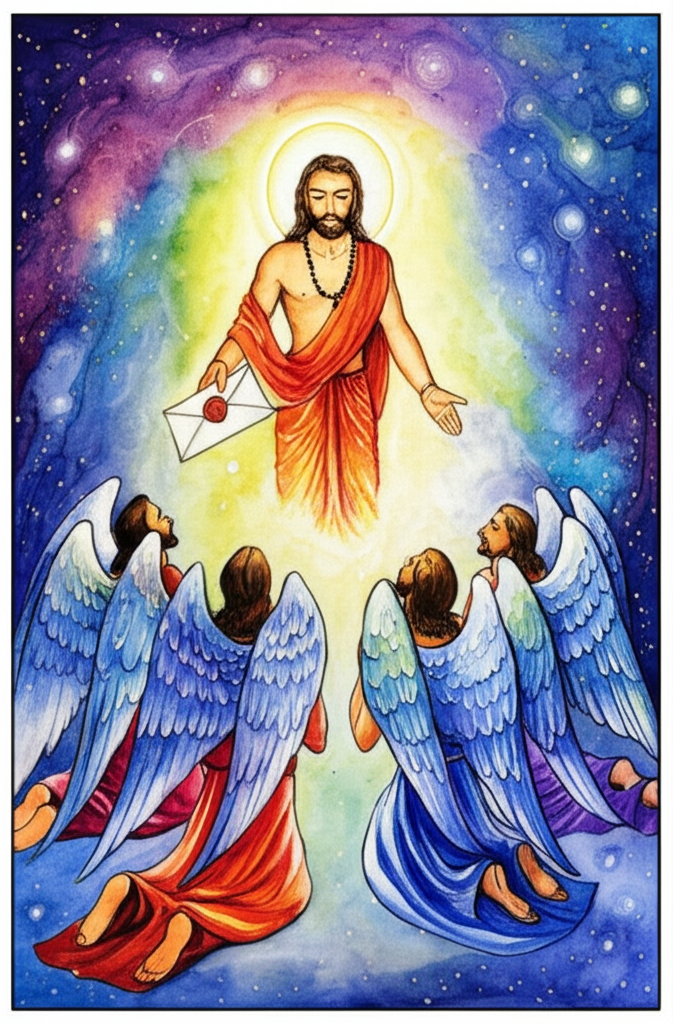
God was a little angry. But he said to them, “Don’t worry. I know that the fakír Nánaksá is with the grain seller and his wife right now. He’s the one who tricked you!”
Then God wrote a letter promising the grain seller twenty more years of life! But at the end of those twenty years, he would really have to pass away and not live any longer. God gave this letter to the angels and told them to take it to the grain seller’s wife. He told her to have a silver box made and put the letter inside. Then, she was to hang it around her husband’s neck so that he would live for twenty more years.
The four angels came back to earth and went to the tree where they had left the woman. They found her waiting for them and gave her the letter. They said, “You need to get a silver box made and put this letter in it. Then, hang it around your husband’s neck so that he can live for twenty more years!”
The woman thanked them and was very happy! She took the letter and went home. She found her husband feeling fine, and Nánaksá was with him. She gave Nánaksá the letter and told him what the angels had said to do with it. Nánaksá read the letter and was very pleased.
Then, he said to her, “Call a silversmith to make the silver box. And you need to make a big dinner and ask all your friends, both rich and poor, to come and eat!”
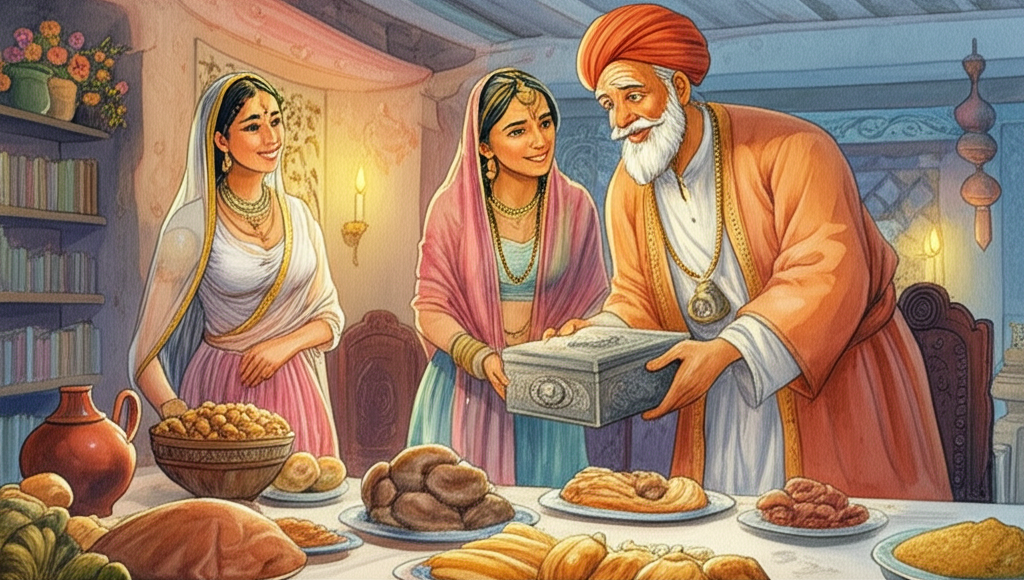
She did everything he said. When the dinner was ready and all their friends had arrived, the fakír said, “No one here, men, women, or children, can eat until they have put their hands over their faces and prayed to God!”
Everyone covered their faces with their hands and prayed to God. While they were doing this, the fakír quietly left! When they uncovered their faces, he was gone! No one knew where he went, and no one saw him leave. Some of the men went to look for him, but they couldn’t find him. No one ever saw him again.
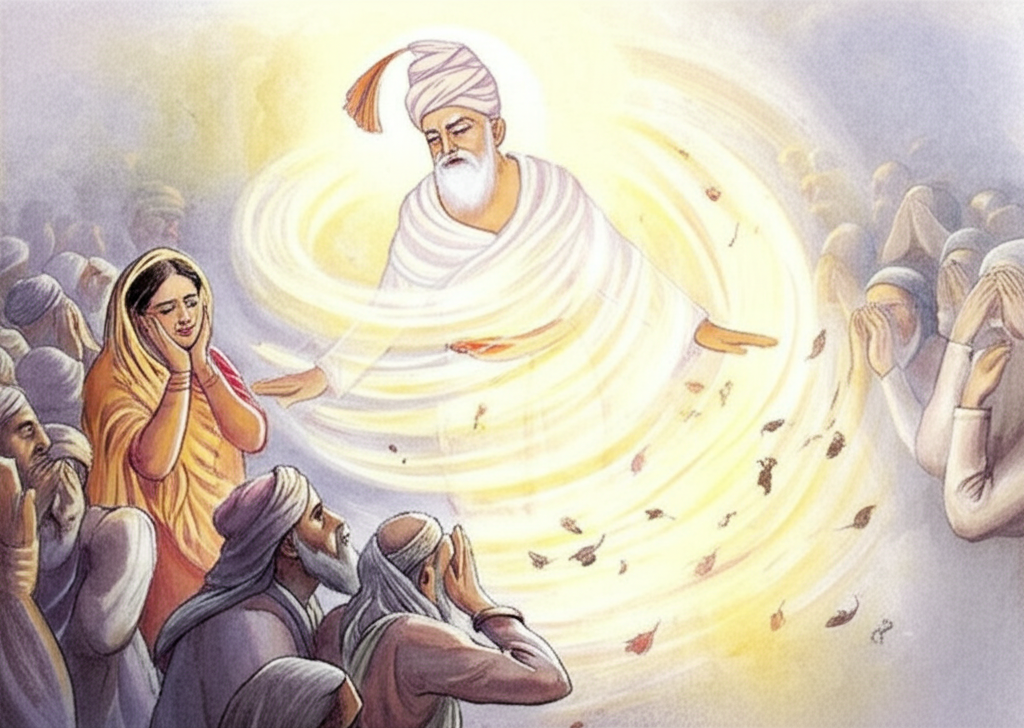
But the grain seller and his wife lived happily ever after.